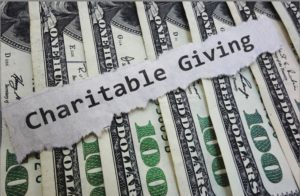Retirement portfolios aren’t what they used to be.
Today’s environment of rising life expectancies, low bond yields, and elevated stock market valuations is unparalleled. Retirees cannot control many of these factors. Many feel helpless to the ebbs and flows of the market.
But, there is something that all investors can control: expectations. By looking at historical figures and making conservative, educated predictions about the future, retirees can better prepare themselves for whatever lies ahead.
In the case of dividends, understanding the value they add to a portfolio but not necessarily being an end in themselves is critical.
What are stock dividends?
A dividend is the distribution of some or all of a company’s earnings to its shareholders.
Once a company generates profits, it must then decide what to do with that capital. Should it be reinvested to drive further profits? Or should it be distributed back to shareholders? As a general rule of thumb, younger, fast-growing companies tend not to pay dividends, while more established, slower growers may be more likely to pay dividends. Companies with predictable profits and operating in saturated markets are often the best dividend payers.
Dividends are usually paid out as cash, but may also be additional stock or other property, and are typically distributed quarterly.
How do dividends affect my retirement portfolio?
The S&P 500’s current dividend yield is 1.38%. That means, for every $100,000 invested, $1,380 can be expected to be paid out in dividends.
The dream of many retirees is to own a balanced portfolio of stocks and bonds that pays enough in interest and dividends that they never have to touch their principal. The prospect of never needing to sell one’s stocks or bonds to live is pretty appealing, but at these rates, it’s far from practical.
In 2020, the average retiree spent about $60,000. That means, to live off the interest and dividends alone of a 50/50 stock/bond portfolio at current yields, a portfolio balance of nearly $3,700,000 is required.
Yes, a more savvy dividend investor may be able to construct a portfolio that’s yielding closer to 3.5-4%. Still, the numbers aren’t great, and considerable risk would have to be taken on to reach those yields.
No, retirees don’t have to live on their interest and dividends alone, but expecting to do so is a huge mistake. Dividends should be seen as the gravy, not the meat-and-potatoes, of a retirement plan.
Drawing down on one’s principal balance may be scary but, with the right plan in place, it doesn’t have to be.
Bonds vs. dividends in 2021
U.S. AAA-rated corporate bonds currently have an effective yield of 1.88%. Considering the Fed is targeting 2% inflation (if not higher in the short-term), investing in corporate debt and expecting any sort of positive return outside of protecting purchasing power is lunacy.
To put it more succinctly, Warren Buffet (in May 2018) said, “Long-term bonds are a terrible investment at current rates and anything close to current rates.” Since that statement, yields have decreased slightly.
There is a case to be made about the positives of owning bonds as part of a well-rounded portfolio – they smoothen returns and provide a safety net, both materially and psychologically. This is especially true for retirees. Don’t expect them to provide much income, however, and now is almost certainly the wrong time to load up on long-term bonds. For now, stick to debt with shorter durations.
The perfect retirement portfolio
The perfect retirement portfolio for one person is different for another. Outside of your specific dreams and goals, the perfect portfolio should be the one that helps you sleep well at night, is simple to understand and implement, and easy to trust.
Put simply, the perfect retirement portfolio is the one you don’t have to think about at all.



